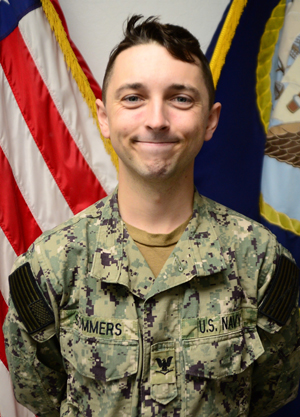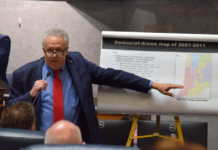FALLON, Nev.– A Warsaw native is serving with Naval Aviation Warfare Development Center supporting TOPGUN aviators at the Navy’s premier tactical air warfare training center.
Petty Officer 3rd Class Braden Sommers is a 2016 Warsaw Community High School graduate.
“I learned in Warsaw that no two people are the same, and that everyone has a different background,” said Sommers. “You shouldn’t judge people based on that.”
These lessons have helped Sommers while serving in the Navy.
Today, Sommers serves as an aviation electronics technician on board Naval Air Station (NAS) Fallon, Nevada.
“I joined the Navy to better provide for my family because I wanted to be a better dad,” said Sommers.
Fifty-two years ago, TOPGUN was introduced with the mission of reducing casualties of naval aviators sustained during the Vietnam War. Within a year, this goal was reached with the United States having one casualty for every 12 enemy deaths. Since then, TOPGUN continues to train the finest naval aviators and has inspired one blockbuster movie released in May 1986, with a sequel planned for release this month.
Today’s U.S. Naval Aviators possess the professionalism, tactical skills, innovative mindset, and understanding of advanced technologies to succeed against adversaries. They are disciplined, critical thinkers who excel in challenging environments – like those seen in the movie, according to U.S. Navy officials.
“I am extremely excited about the impact this movie will have,” said Vice Adm. Kenneth Whitesell, Commander Naval Air Forces. “Much like the trend that followed the original film, I am confident that ‘Top Gun: Maverick’ will have a tremendous impact on our Navy recruiting efforts which will greatly increase the numbers of brave and talented Sailors among our ranks.”
According to Navy officials, TOPGUN is a prestigious program only open to the top 1% of naval aviators. Aviators who attend the course are trained in a variety of areas including air combat, jet maneuverability, enemy tactics and more.
The mission of NAS Fallon is to support carrier air wings prior to deployment, as well as, other units during training and exercises. This goal is achieved through 300 clear flight days a year, four bombing ranges, an electronic warfare range and many other training facilities. The base is also home to a 14,000-foot runway, which is the longest in the Navy.
NAS Fallon provides aviators the unique opportunity to train in realistic battle scenarios while including every element of an air carrier wing. It is the only facility in the world with this ability.
The aircraft stationed at NAS Fallon support aircraft carrier missions around the world. This year, the Navy is celebrating the centennial of the aircraft carrier and its importance to naval aviation. When the air wing is embarked on an aircraft carrier, the ship contains more than 70 attack fighter jets, helicopters and other aircraft, all of which take off from and land aboard the carrier at sea. With more than 5,000 sailors serving aboard these ships, aircraft carriers are self-contained mobile airports.
“The aircraft carrier is our U.S. Navy’s centerpiece, our flagship, and a constant reminder to the rest of the world of our enduring maritime presence and influence,” said Rear Arm. James P. Downey, USN, Program Executive Officer (PEO) Aircraft Carriers. “These ships touch every part of our Navy’s mission to project power, ensure sea control, and deter our adversaries.”
Serving in the Navy means Sommers is part of a world that is taking on new importance in America’s focus on rebuilding military readiness, strengthening alliances and reforming business practices in support of the National Defense Strategy.
“The Navy protects our trade commerce and if we don’t have anything coming in or out of ports, we can’t sustain the country,” said Sommers.
With more than 90% of all trade traveling by sea, and 95% of the world’s international phone and internet traffic carried through underwater fiber optic, Navy officials continue to emphasize that the prosperity and security of the United States is directly linked to a strong and ready Navy.
Sommers and the sailors they serve with have many opportunities to achieve accomplishments during their military service.
“I am most proud of learning about nuclear physics,” said Sommers. “I was a prior nuke, and not a lot of people get the opportunity to learn about how reactors work.”
The future of U.S. aviation depends on the Navy’s ability to achieve their vision for defeating tomorrow’s air threats with the support of the ground crews and aviators.
As Sommers and other sailors continue to train and perform missions, they take pride in serving their nation in the United States Navy.
“Serving in the Navy gives me something to be proud of because it is something for my son to look up to,” said Sommers.





